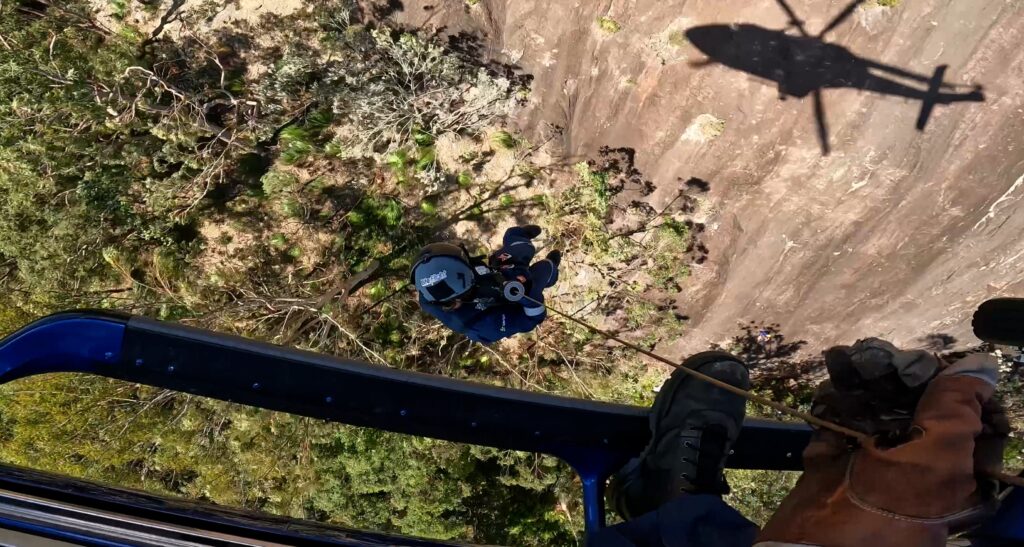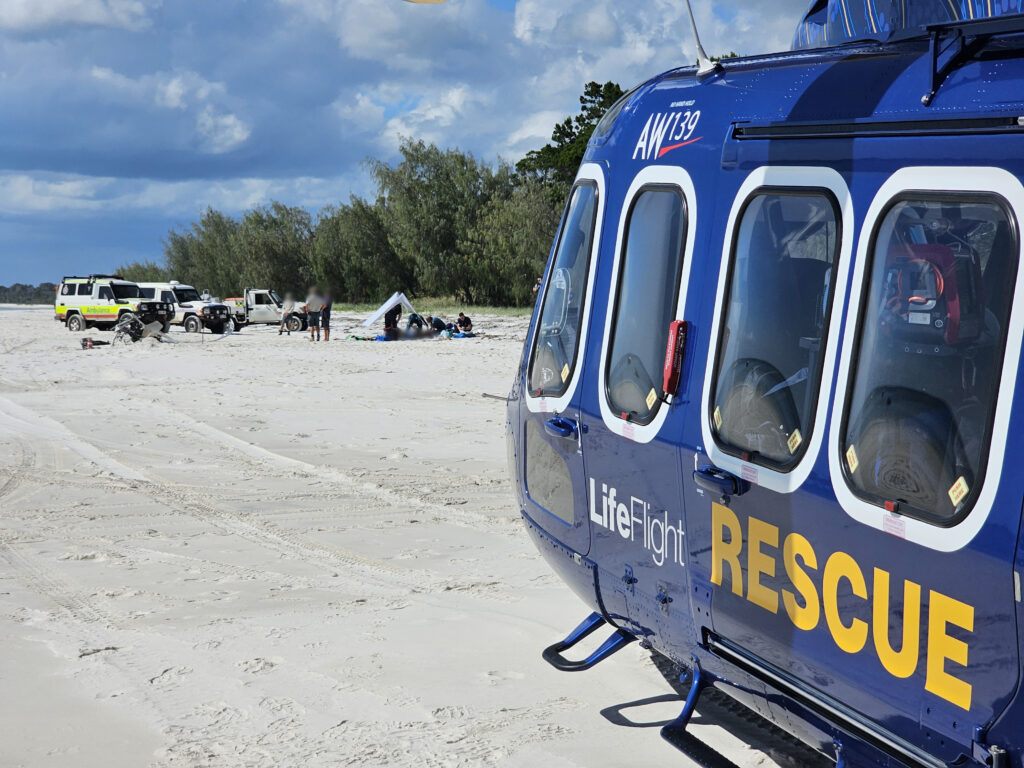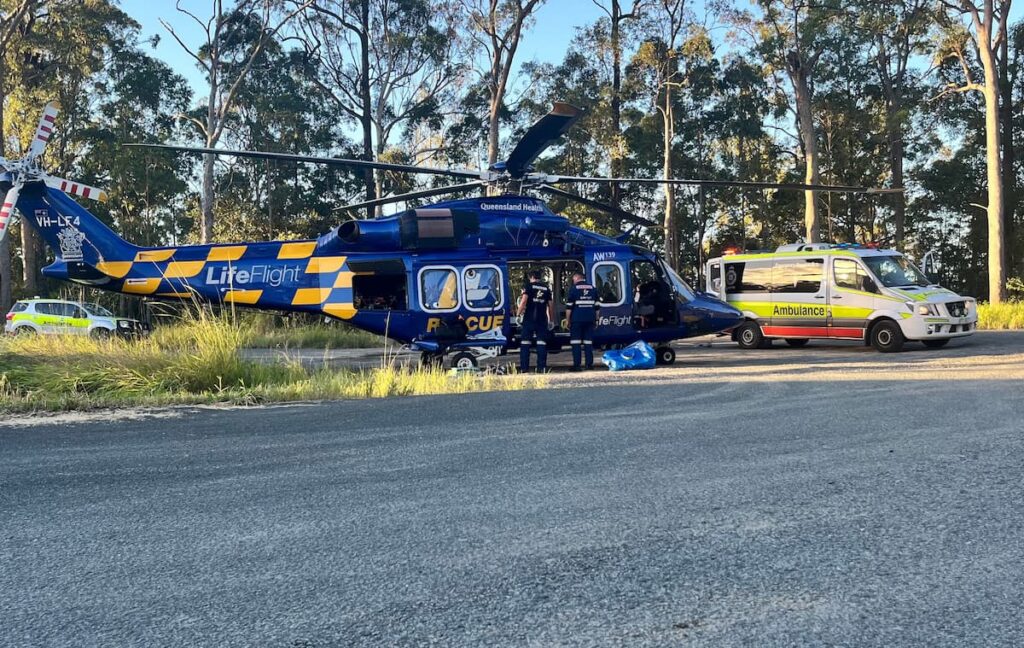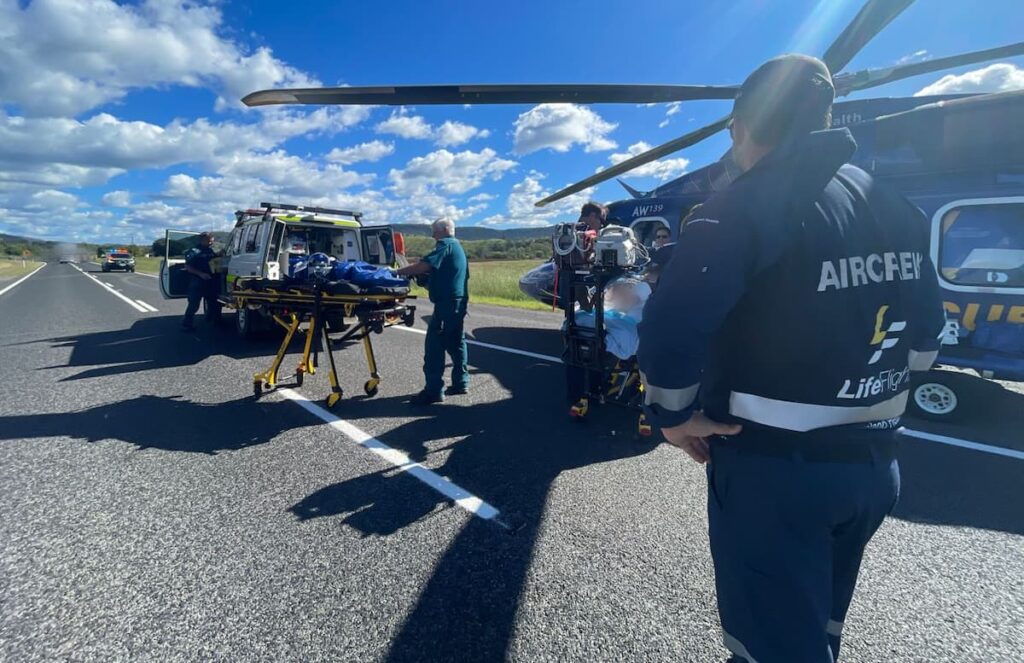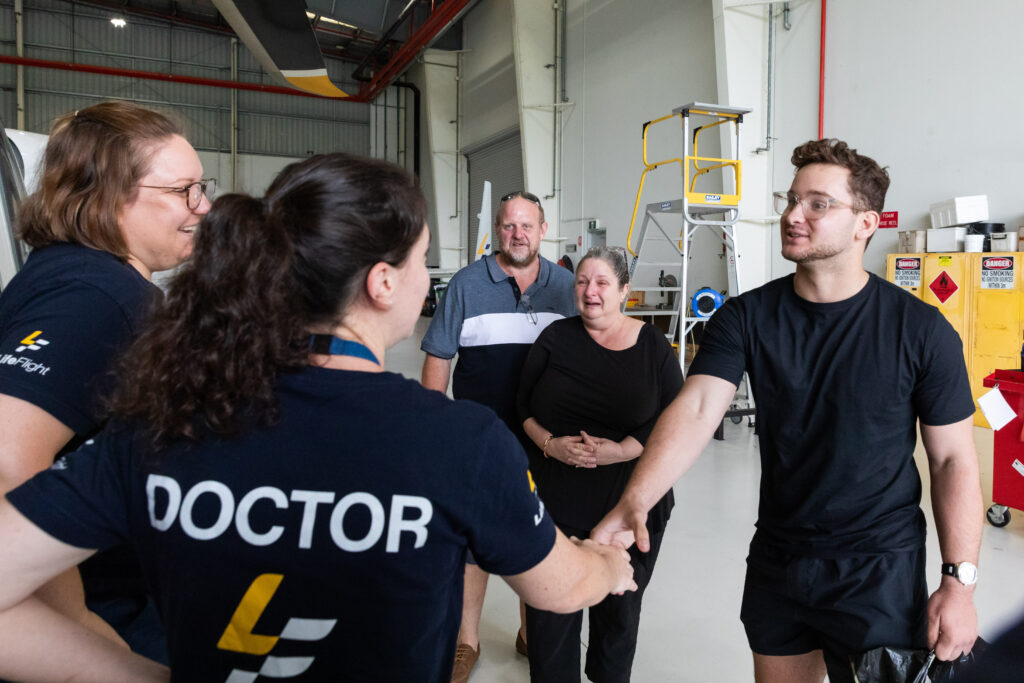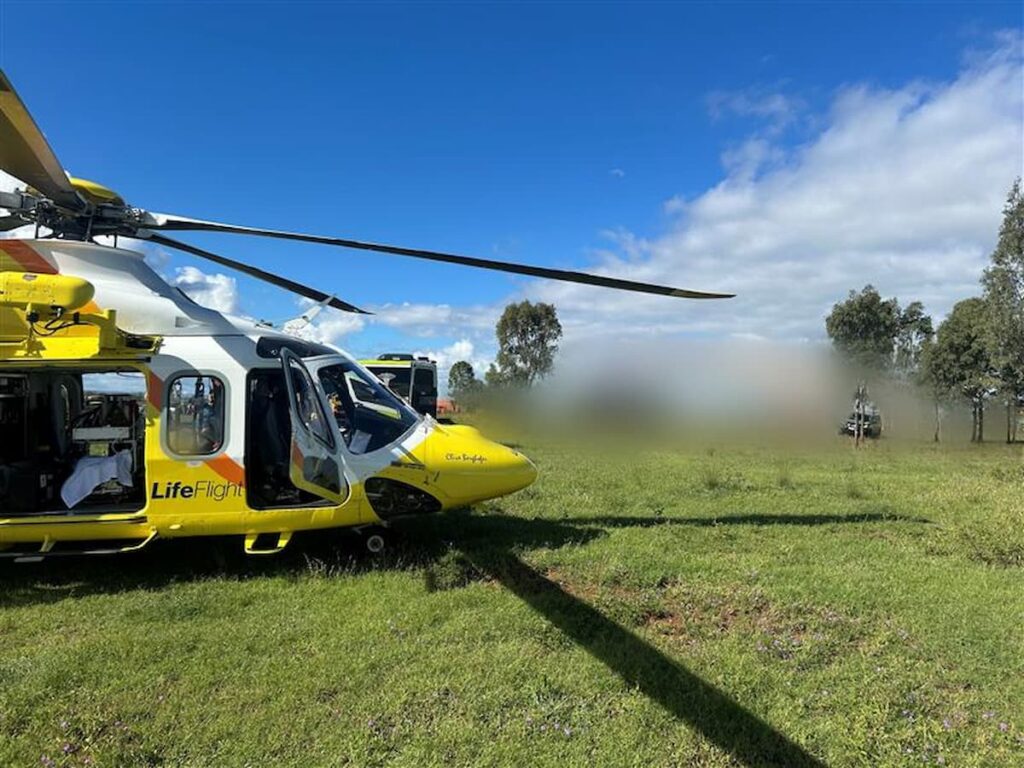A Swedish doctor who was part of the incredible team, which helped save the life of a young man during one of RACQ LifeFlight Rescue’s most challenging missions, has returned to serve the Queensland community again, along with two dozen new retrieval registrars.
Five years after his first experience as an RACQ LifeFlight Rescue Critical Care Doctor, Martin Londahl is back on board the rescue choppers.
The Anaesthesia and Intensive Care Medicine specialist spent the Covid-19 pandemic period working in a Swedish hospital, but with international borders open, he and his family couldn’t resist returning.
One mission that impacted him deeply during his first rotation was in 2019 when two LifeFlight helicopter crews and a team of first responders were sent to rescue a teenager whose leg was caught in the winch wire attached to the rear of a skidder.
The young man’s leg was pulled into the heavy machinery and entwined in the winch drum from his toe to his upper thigh.
After several hours trying desperately to remove him, the difficult decision was made to amputate his limb at the scene, to free him from the machinery and save his life.
“The thing that stuck with me was that there were so many moving parts. One of the pilots counted – we were 16 people, hands on removing him from the winch and everyone did their thing and it worked out and we made it…and you know, I was a small part of it and that was amazing,” said Dr Londahl.
“He made it, so that was good.”
Dr Londahl is among a group of 25 doctors, who will be starting work on aeromedical helicopters and jets across Queensland.
Many have come from interstate or overseas to work with LifeFlight. Dr Kate Hames is so committed to her new country she became an Australian citizen the same fortnight she joined LifeFlight.
The Emergency Medicine Registrar has travelled the world, worked on bringing family-planning to communities in Kenya, appeared in a documentary based in Borneo and undertaken some urban search and rescue training.
“I think as doctors there are huge expectations on us to do lots of things and if we can expose ourselves to as many different environments and different people and mix it up and make it more interesting, we’re going to be in this job for a long time so we need to be able to make sure we’ve got that longevity. If you’re in one place all of the time with the same people you’re never going to have that so coming here I’m just so excited to experience all of that and hopefully, maybe, potentially when I am a boss continue to work in retrieval service because I think it’s something that I’m really going to love,” said Dr Hames.
The new recruits complete an intensive training week with instructors from the LifeFlight Training Academy, which prepares them for the many challenges of retrieval medicine.
“The instructors are incredible. I’ve never seen such encouraging, kind people in a very stressful environment with people who’ve never done anything like this before and they’re so patient with us. It’s obviously a little bit stressful but they make it really fun and inclusive. They set it at a really lovely pace and normally in a classroom we all get a little bit bored and I’ve never been bored once – it’s so good and I can’t wait to get more involved with the aviation side of it over the next few days,” said Dr Hames.
One of the most important and challenging aspects of the training, is learning how to be winched to and from a chopper.
“Some of our patients are in remote areas, that could be a mountainside, that could be in the bush that’s not accessible. We need to be able to insert our paramedic and doctor into that environment so they can care for the patient and ultimately recover them. Whilst it’s not something we do every day there is a chance that they could go out next week and be tasked to a job on the side of a mountain or otherwise that entails winching them in to save that patient,” said LifeFlight Chief Aircrew Officer Nathan Minett
The exercise teaches double lift techniques, when two crew members are winched. The doctor also learn how to bring a stretcher patient safely into the aircraft.
“So, they’re practicing the two skill sets in the aviation environment that we really need them to embed and make sure that they know really well,” said Nathan Minett.
The retrieval registrars were also strapped into a metal helicopter simulator, which is then dunked underwater in different emergency scenarios, as part of Helicopter Underwater Escape Training (HUET).
It is a case of always hoping for the best, but preparing for the worst.
“It is highly unlikely that they’re ever going to use it, but it’s a safety issue and this can be developed for if the aircraft had an issue and had to go to the ground and was forced landing to the ground with smoke and fire being maybe the issue, so with the HUET training we do a lot of it is to do with getting seatbelts on properly, locating the exit knowing where it is without actually looking for it. So the whole package is designed for safety in the aircraft in regard to what may happen whether it be in the water or into the ground. LifeFlight HUET Manager Mick Dowling said.
Back on dry land, at the Queensland Combined Emergency Services Academy at Whyte Island, the doctors were put through their paces in a series of simulated emergency scenes.
They were faced with some of the confronting realities of pre-hospital care, in realistic scenarios including a worker injured in a confined space and in need of evacuation from a ship, a near-drowning incident in a backyard pool and a car crash with fatalities and survivors.
The majority of the RACQ LifeFlight Rescue Critical Care Doctors’ work is performed on behalf of Queensland Health, tasked by Retrieval Services Queensland, within Queensland Ambulance Service.





